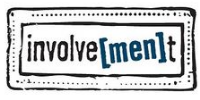Assessing the Performance of 3 Human Immunodeficiency Virus Incidence Risk Scores in a Cohort of Black and White Men Who Have Sex With Men in the South
Abstract
BackgroundRisk scores have been developed to identify men at high risk of human immunodeficiency virus (HIV) seroconversion. These scores can be used to more efficiently allocate public health prevention resources, such as pre-exposure prophylaxis. However, the published scores were developed with data sets that comprise predominantly white men who have sex with men (MSM) collected several years prior and recruited from a limited geographic area. Thus, it is unclear how well these scores perform in men of different races or ethnicities or men in different geographic regions.MethodsWe assessed the predictive ability of 3 published scores to predict HIV seroconversion in a cohort of black and white MSM in Atlanta, GA. Questionnaire data from the baseline study visit were used to derive individual scores for each participant. We assessed the discriminatory ability of each risk score to predict HIV seroconversion over 2 years of follow-up.ResultsThe predictive ability of each score was low among all MSM and lower among black men compared to white men. Each score had lower sensitivity to predict seroconversion among black MSM compared to white MSM and low area under the curve values for the receiver operating characteristic curve indicating poor discriminatory ability.ConclusionsReliance on the currently available risk scores will result in misclassification of high proportions of MSM, especially black MSM, in terms of HIV risk, leading to missed opportunities for HIV prevention services.

